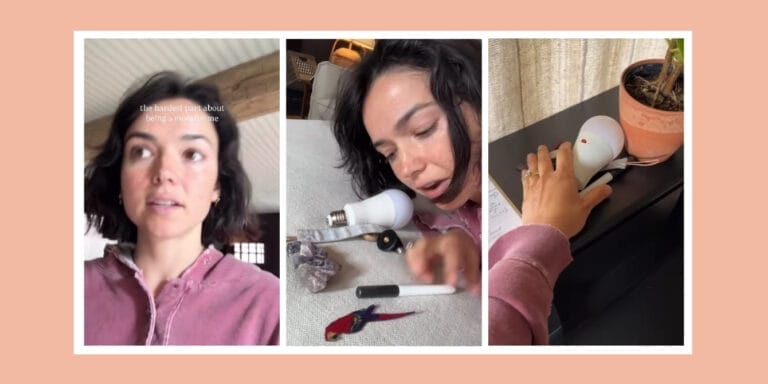Tidying up with kids ✨: How motherhood changed Marie Kondo’s KonMari philosophy

What “sparks joy” for a kid may not do the same for you...
In the years since its 2014 release, The Life-changing Magic of Tidying Up by Marie Kondo has become quite the sensation—at least among organizational experts, minimalist bloggers and inspirational Instagrammers. The appeal of Kondo’s KonMari method is easy to understand: When attempting to declutter our homes, whether something stays or goes hinges on the question of whether it “sparks joy.”
For parents, though, the bigger question is whether you can do the KonMari method with kids. After all, as any parent knows, what “sparks joy” for a little one may do the opposite for us. (In our house, my son’s loud corn popper push toy is a favorite for him, but just gives me headaches.)
But something else has changed in the time since Kondo’s book came out: She became a mom—which made her all the more adamant that parents can get life-changing magic of a cleaner house while respecting their kids’ wants.
“When it comes to children, it can quickly feel like their belongings are overtaking the house,” Kondo recently said on Instagram. “One tip I share is how having designated spaces for children’s belongings makes parents more aware of how much they need to buy of a certain item. After all, your home is a finite space!”
So, rather than having to make the tough call about what kids toys stay or go, Kondo said to create boundaries before the gear even enters the house. (In her home, for example, each daughter has a certain number of drawers allotted to her.)
As another advantage, she said these practices can get kids in the KonMari mindset early on.
In a new interview with the Wall Street Journal, Kondo said her 2-year-old daughter already picks up and folds her own clothes—and her 10-month-old daughter isn’t far behind.
“It’s never too early to learn how to tidy up,” Kondo said, suggesting good first tasks include using a toy mop or matching socks. “You can let your children take on a challenge when they turn about 1 year old, after they learn how to walk.”
Of course, toddlers aren’t the only ones who may be baffled by how to fold baby clothes. In a video on Instagram, Kondo shared how her special method for folding works on tiny clothes. The expert organizer also recommended the folded clothes go into labeled containers instead of into a dresser.
“When it comes to baby clothes, I came to the conclusion that boxes work best,” she said in the caption. “The clothes are tiny and likely to slip around on a shelf or a drawer, but putting them in small storage is the perfect solution.”
For parents struggling with So. Much. Stuff., Kondo recommended tackling the adult messes first. She said this will teach children what a clean house feels like and that people can find joy in picking up after themselves.
She also said motherhood reinforced her belief that children who do chores are more invested in their homes and more likely to find success in adulthood. As she said on Instagram, “Tidying requires mindfulness, fosters gratitude and instills discipline.”
Bottom line: It’s never to early to teach kids how to help around the house—and, according to Kondo, the best way to help them feel the magic of tidying up is to feel it yourself.


































